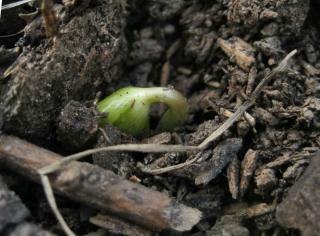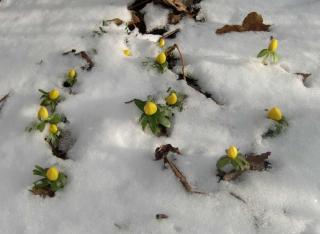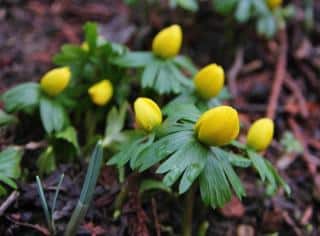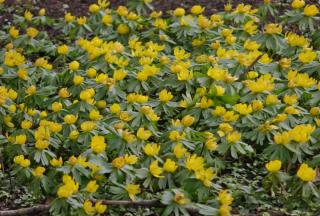

Eranthis hyemalis is a winter-blooming plant with a small golden flower, ideal to bring warm colors to your garden during the cold season.
Eranthis hyemalis key facts :
Botanical name – Eranthis hyemalis
Previously – Helleborus hyemalis
Common names – winter aconite
Family – Ranunculaceae
Type – perennial
Height – up to 4 inches (10 cm)
Exposure – part shade
Soil – any type, well drained, full of humus
Flowering: winter (January to March)
Foliage: deciduous in summer
Winter aconite is one of the tuberous hardy perennials. Its main appeal lies in its flowers that bloom in the middle of winter and all the way to the beginning of spring. About an inch across (2 cm), their hue is a magnificent and warm gold yellow color: perfect to bring light to a drab garden! The cup-shape flower and shape of its petals is similar to those of buttercup (Ranunculus repens).
Note that Eranthis hyemalis is a toxic plant and ingesting it may cause light stomach pain. Simply touching it may already trigger rashes or itching, so we recommend wearing gloves whenever you have to handle it.
There are a few synonyms in the botanical names: Eranthis cilicicus and Aconitum hyemale.
Eranthis hyemalis copes well with all types of soil. As for the pH, though the plant will survive nearly anything, you’ll get best results in slightly alkaline soil (pH higher than 7).
 Regarding exposure, winter aconite prefers part shade. It’s also able to grow in full sun on the condition that its base is always in cool soil.
Regarding exposure, winter aconite prefers part shade. It’s also able to grow in full sun on the condition that its base is always in cool soil.Plant in the middle of fall. If you’ve bought tubers in a garden store, there’s a risk that they’re all dried out. If this is the case, soak them for 24 hours in a tub of water: they’ll grow plump again.
To lock moisture in the ground, try spreading a layer of natural mulch around the base of each Eranthis hyemalis. A word of caution: don’t use pine bark mulch, this would make the soil too acidic.

Over the summer, while the plant is dormant, keep a thick layer of mulch, compensating for the fact that it gets thinner as plant matter breaks down.

Again, end of spring, it’s also possible to split the tubers when the flowers have wilted away but the plant still has leaves. Note that winter aconite doesn’t like to be disturbed repeatedly. Let it rest for several years before splitting it again.
Winter aconite is a plant that resists diseases well, rarely showing any symptoms. However, if soil moisture is too high, tubers might start to rot. In addition, slugs seem to love nibbling on winter aconite leaves.

Good companions for winter aconite include other flowers that bloom in winter: snowdrop, lungwort, bergenia, hellebore, hosta, tricyrtis, etc.
>> Read also: Decorate your rock gardens with small spring bulbs